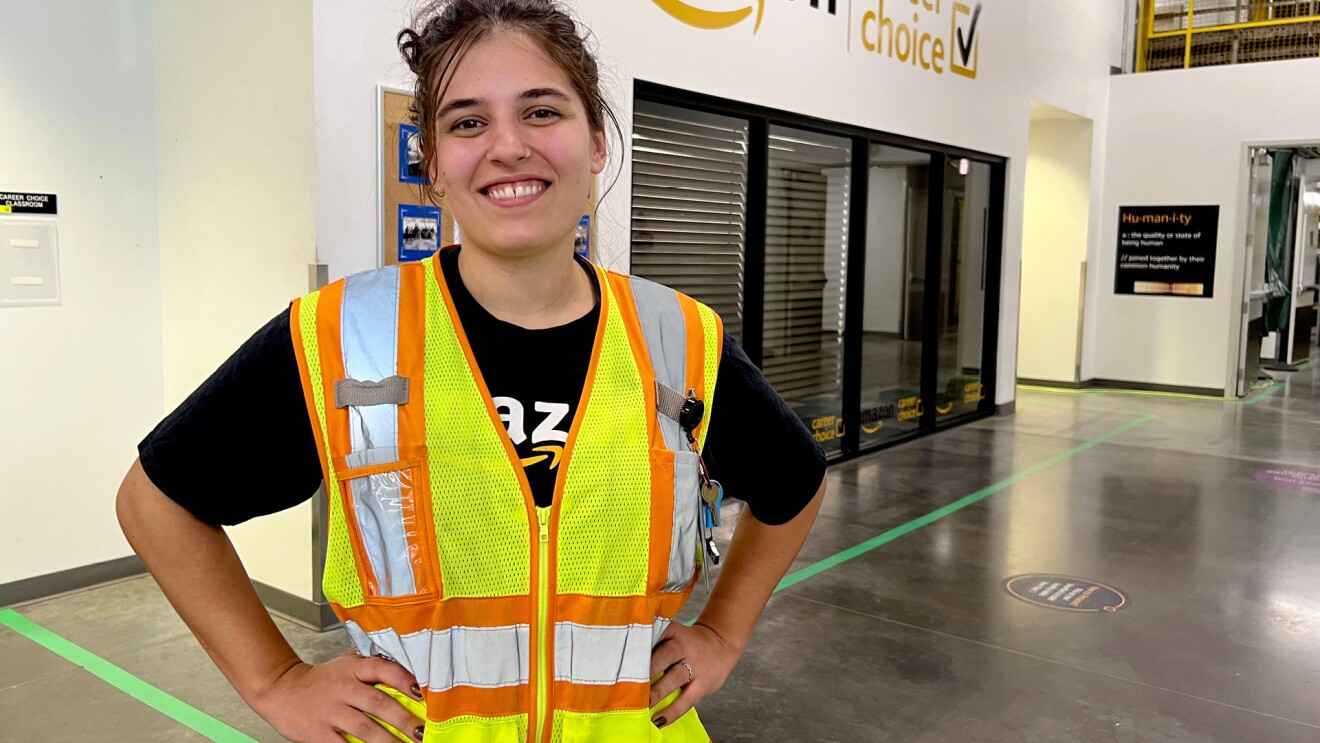Here are three ways I use Amazon’s Leadership Principles to grow my skills and better serve Amazon employees.
Page overview
Read the descriptions—then re-read them
Everyone experiences Amazon’s Leadership Principles in different ways. That’s why I recommend reading, and re-reading the descriptions to get a full understanding of what each principle is actually trying to say and how it applies to your current situation.
For example, one principle that’s often misunderstood is “Ownership.” You may hear the word ownership and think that means you own the project, but it’s a bit more nuanced. The description says: Leaders are owners who think long-term and don't sacrifice long-term value for short-term results. They act on behalf of the entire company beyond just their own team, and they never say, “that's not my job.” The principle is actually about thinking long-term, not just fixing the problem that's right in front of you.
 Photo by JORDAN STEAD
Photo by JORDAN STEADI think that's important, because the work you need to do to solve a customer’s problem doesn’t always line up with your job assignment. This is a great example of how the descriptions provide the extra detail you need to get the most value from the Leadership Principles.
When you look closely at our Leadership Principles (LPs), it's clear that every word was carefully crafted and thought about. You'll also notice that there’s tension between the LPs, and that’s on purpose. Amazon has such a high bar that we don't allow ourselves to get stuck in an either-or situation, and it can be challenging to get the balance just right when using the LPs to help me navigate a challenging situation or make a hard decision.
I ask myself things like, "Is this a moment where I should be leaning more into ‘Bias for Action’? Or is this really a ‘Think Big’ moment?" "Can I balance 'Deliver Results' while also practicing 'Insist on the Highest Standards?'"

Leaning into the tension between the LPs has helped me continue to grow as a leader. Even after many years, I believe that seeking the right balance between the LPs for each situation goes a long way in helping serve customers the best way possible.
I use the Leadership Principles as a cheat sheet to help navigate ambiguity. When I’m struggling with what to do for a customer—in my case, those customers are employees—I use the Leadership Principles to help me get it right.
As an example, I’ve used the “Think Big” principle many times to encourage myself and my team to come up with more creative and helpful solutions to some of our most difficult challenges. We resist the urge to come up with a quick answer, and take a step back. For the first two weeks, I’ll ask my team not to come up with a solution, but instead just go wander in the data and anecdotes. Then we’ll meet to share what we found and start looking for patterns. This is how we find ideas that will really make a difference for the customer.

Hopefully these tips help you get the most benefit from the Leadership Principles as you develop your skills and build your career. Read the full list of Amazon’s Leadership Principles and their descriptions, and keep them handy when you need them.
Learn more from leaders at Amazon:
- I'm an Amazon VP who's grown with the company for 12 years. Here are my top 5 leadership tips for managers.
- I’m an HR executive at Amazon. These are 5 lessons I’ve learned about leading successful, inclusive teams.
- I’m Amazon’s VP of Workplace Safety. Here are 3 lessons I’ve learned about developing a vision and effectively executing it.
Trending news and stories
- Amazon Pet Day 2025 is coming May 13-14 with 48 hours of deals on pet products and supplies
- LinkedIn names Amazon a top US company where people want to work for the eighth year in a row
- CEO Andy Jassy’s 2024 Letter to Shareholders
- AWS is first major cloud provider to deliver Mistral AI’s Pixtral Large as a fully managed, serverless model











